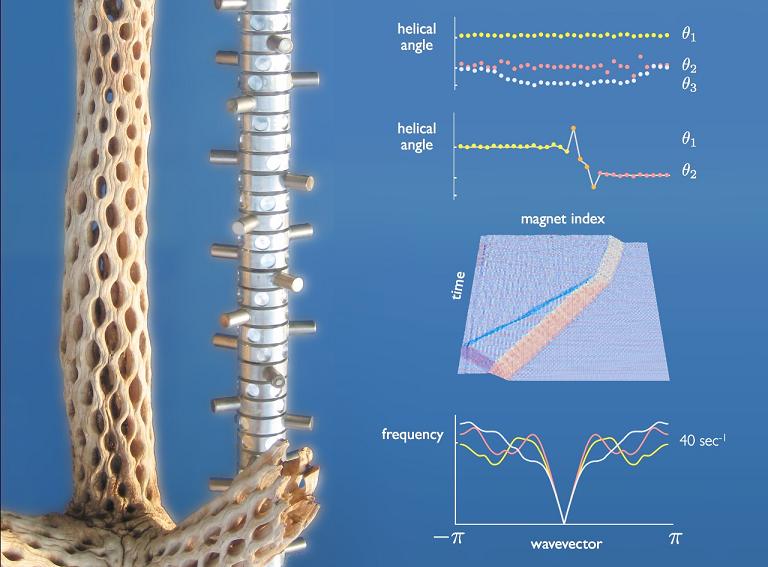
© Cristiano Nisoli, Nathaniel M. Gabor, Paul E. Lammert, J.D. Maynard, and Vincent H. Crespi. ©2009 APS(Left) Mammillaria elongata, or golden star cactus, displays a helical morphology. (Right) A magnetic cactus of dipole magnets on stacked bearings assumes phyllotactic spirals, similar to the biological cactus. With the magnetic cactus, physicists have investigated the dynamics of phyllotaxis.
One of humanity's earliest mathematical inquiries might have involved the geometric patterns in plants. The arrangement of leaves on a branch, seeds in a sunflower, and spines on a cactus appear with an intriguing regularity, providing a simple demonstration of mathematically complex patterns.
In a recent study, researchers have experimentally demonstrated for the first time a celebrated model of "phyllotaxis," the study of mathematical regularities in plants. In 1991, S.L. Levitov proposed a model of phyllotaxis suggesting that the appearance of the Fibonacci sequence and golden mean in the pattern of spines on a cactus can be replicated for cylindrically constrained, repulsive objects. Now, researchers have constructed a "magnetic cactus" with 50 outward-pointing magnets acting as spines, which are mounted on bearings and free to rotate on a vertical axis acting as the plant stem. With this setup, the researchers, from Los Alamos National Laboratory in New Mexico; Cornell University in Ithaca, New York; and The Pennsylvania State University (PSU), have verified Levitov's model, and their study has been published in a recent issue of
Physical Review Letters.
In their experiment, the researchers put the system in a low-energy state by mechanical agitation. Then the scientists observed as the magnets (spines) arranged to form phyllotactic spirals, generating a so-called Farey tree of unfavorable angles. The unfavorable angles are fractional multiples of 2π (i.e. 2πi/j, such as 2π/3, 4π/3, etc.). The spines on the magnetic cactus, like those on a plant, form a helix around the cylindrical stem by growing around these particular angles.
